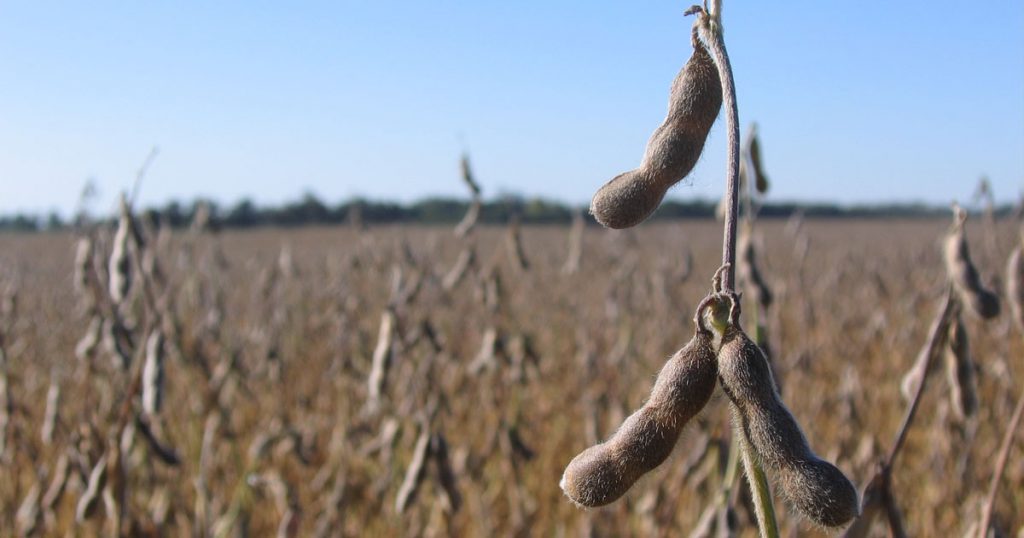Why we don’t grow GM soybeans on my farm (this year)

We don’t grow genetically modified soybeans on my farm. There are two main reasons why we grow non-GM soybeans: to rotate the chemicals we use, and to receive a premium price for the grain harvested.
The corn that we grow is genetically modified, and the herbicide we use for weed control contains glyphosate (glyphosate comes in trade names such as Round Up, Touch Down, Credit, among others). Glyphosate is very effective when used with a crop that has been genetically modified to resist it. We practice crop rotation, which means that we never grow the same crop in the same field two years in a row; this is a common practice for preventing weed, disease, and pest pressure, as well as maintaining soil health.
When it’s time to plant soybeans, we also rotate the chemicals that we use. If you spray the same chemical in the same field too often, weeds can become resistant to it. Since we don’t want to use a product that contains glyphosate for this crop, we choose a non-GM soybean. There are still a wide variety of chemical options for non-GM crops, but they usually need to be sprayed more frequently.
Because non-GM soybeans require so much more management and input costs (more dollars spent on herbicides, more time scouting for weed issues, and a very detailed record-keeping process), there is a premium added to the price. The premium fluctuates every year (it depends on world demand for this type of soybean), and a farmer agrees to a certain premium when they sign a contract to sell their soybeans to an elevator. This year, we contracted our beans with a premium just over $2 at our local elevator — so if regular soybeans are selling for $11.48/bushel, ours will sell for $13.48/bushel. When you grow non-GM soybeans, you hope that the premium will mean extra profit, but because of the extra time and expense this isn’t always the case.
One more note about glpyhosate
While it is popularly associated with genetically modified crops (“RoundUp Ready” soybeans, for example, are soybeans that have been modified to resist the effects of RoundUp glyphosate), it can still be effectively used on non-GM soybeans as a pre-harvest dessicant. When the soybean crop is almost completely dried down to be harvested in the fall, there may be problem areas where weed pressure has lasted through the summer. Significant weed presence makes harvesting very difficult, so a dessicant is applied to kill all of the weeds. It can also be used to dry down patches of the crop that haven’t matured as quickly as the rest, making a more even moisture level throughout the field (again, this makes harvest a lot smoother). This isn’t something that happens in every field or on every farm, but in certain conditions it can be a very useful tool.
